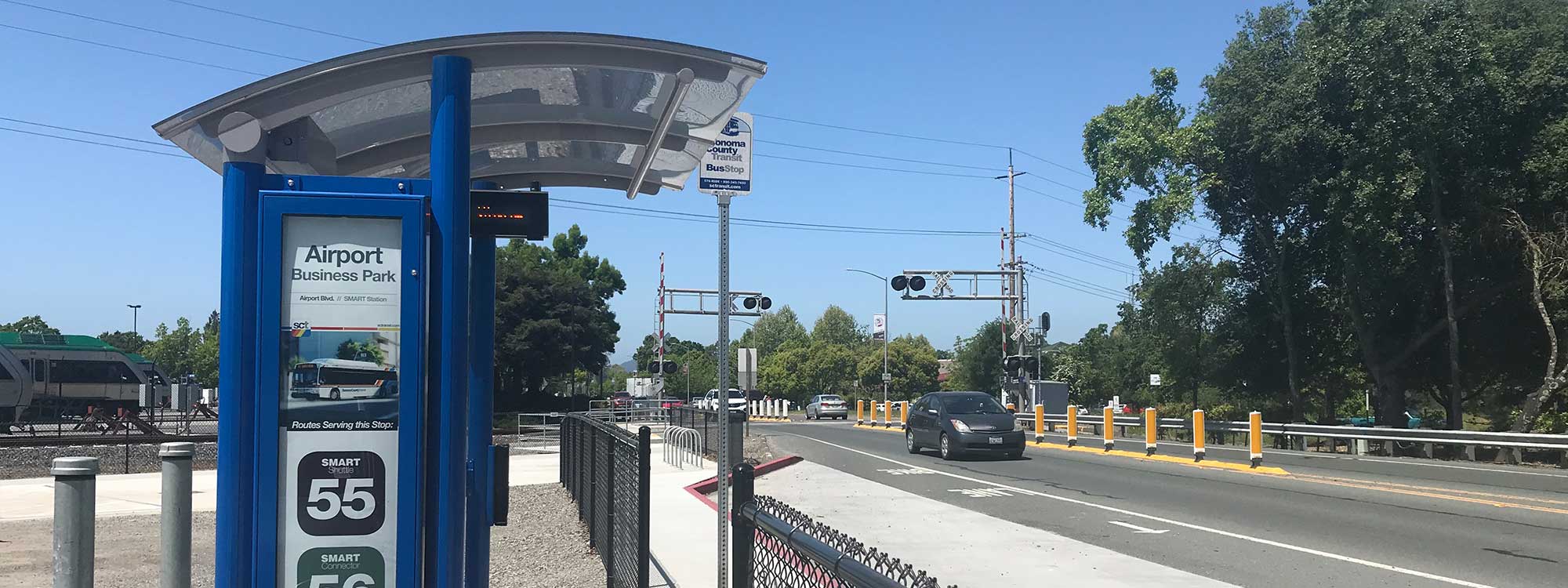The push to build new housing in the aftermath of the North Bay fires has prompted county officials to take a second look at whether homes should be built inside the large commercial and industrial park adjacent to the Sonoma County Airport.
The prospect of a new community popping up in the business park along the SMART line prompted Greenbelt Alliance and Friends of SMART to organize a tour of the area in anticipation of upcoming public workshops to update the Airport Area Specific Plan – and possibly rezone large areas for new housing.
Regional Director Teri Shore led the tour with Windsor Town Council member and SMART board chair Deb Fudge, Friends of SMART chair Jack Swearengen and members Lucy Kortum, Patricia Tuttle-Brown, David Oster, Amy Bridge, and Rick Coates; Sierra Club’s Steve Birdlebough and Will Richards, Chair of Sonoma County Transportation and Land Use Coalition; and Chris Grabill, Program Director at Sonoma County Conservation Action.
The 770 acres of former farmland next to the Sonoma County Airport has operated as a business park and industrial area for three decades. We visited a number of undeveloped parcels, overgrown with green grass and wildflowers, that the county is considering for housing. These open spots are located in the midst of large office campuses used for county offices, wine companies, and high-tech firms that stretch along both sides of Airport Boulevard headed to the commercial airport. About 5,000 people go to work here every day.
Until now, the airport area has not been considered the best place to put housing. It has always been designated for commercial and industrial use because it is so close to the Sonoma County Airport. Building housing here would essentially create a new community in between the city of Santa Rosa and the Town of Windsor. Both cities have voter-approved urban growth boundaries to prevent sprawl beyond their boundaries. Community separators also maintain greenbelts on the edges of the towns and the Airport Business Park.
The only exception to the plan was made in 2006 when the large Vineyard Creek Apartment complex along Highway 101 and Airport Boulevard was allowed. Even that happened only after several years of controversy and multiple environmental conditions were imposed.
Last year, a $350,000 grant from the One Bay Area grant program MTC allowed the county to conduct several public workshops with property owners and community members to update the Airport Specific Area Plan. The main focus was improving transportation, bike paths, and walkways, resulting in a new shuttle bus service that circles the area. At the time, residential development was not a major topic of discussion.
But now that the SMART train is running and the need for housing has been exacerbated by the loss of more than 5,300 homes during the fires, the approach has changed. Several property owners and the county now want to rezone parts of the commercial and industrial area for residential.
This is being pushed forward even though there are many sites still available for housing and development within the cities and towns of Sonoma County. After all, more than 10,000 building permits that were issued across the county have never been constructed.
Our group had many questions when looking around the airport areas such as: Do we need to leapfrog over the housing pipeline to build in an area designed for a business park? How compatible is housing with industrial and commercial uses near the airport? Do we want to build a new community here? What about schools, parks, and shops? Will adding housing increase or reduce car travel? Can we create an eco-friendly, walkable, healthy, affordable community here? Or will it be more like sprawl?
Now is the time to raise these questions and get engaged! Read more and sign up for updates directly from the County on Sonoma’s Airport Specific Plan website.
Contact Teri Shore if you’d like to get involved in the public process.
Photo: Teri Shore




